10+ Sample Project Tracker
-
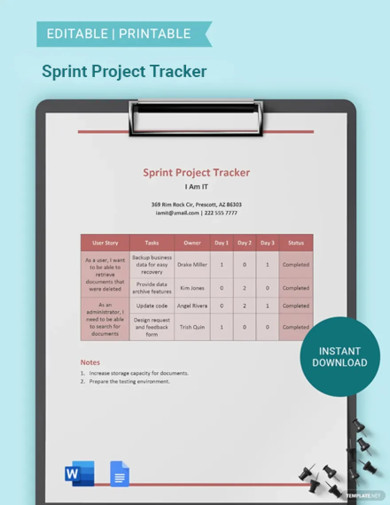
Sprint Project Tracker Template
download now -
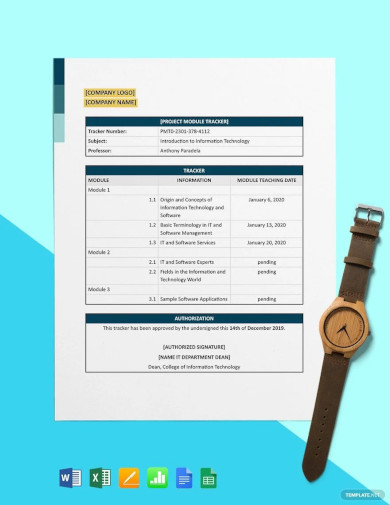
Project Module Tracker Template
download now -
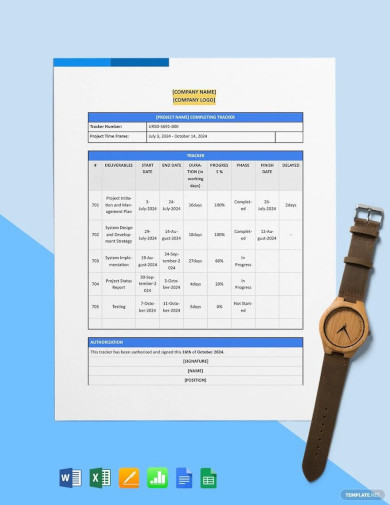
Project Completing Tracker Template
download now -
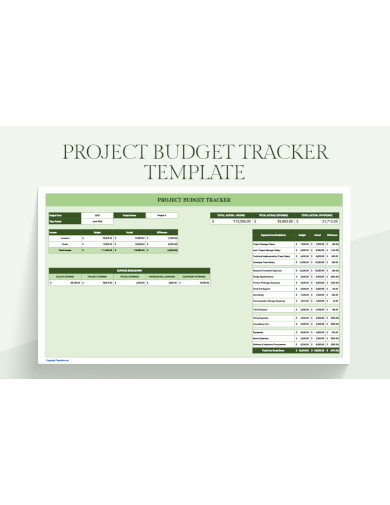
Project Budget Tracker Template
download now -
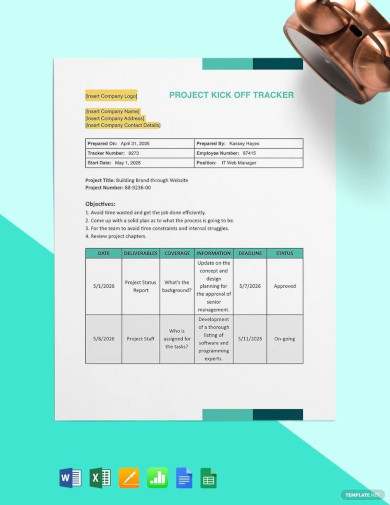
Project Kick Off Tracker Template
download now -
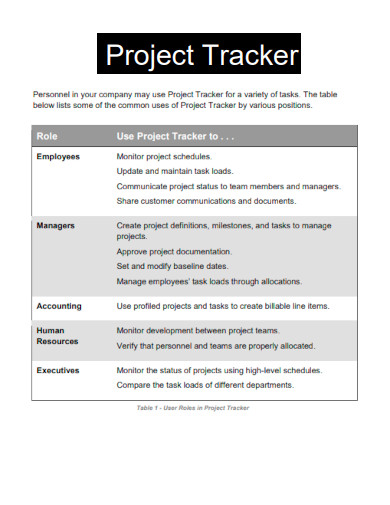
Simple Project Tracker
download now -
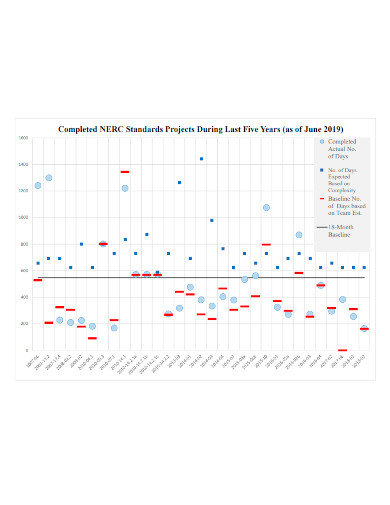
Project Tracker Spreadsheet
download now -
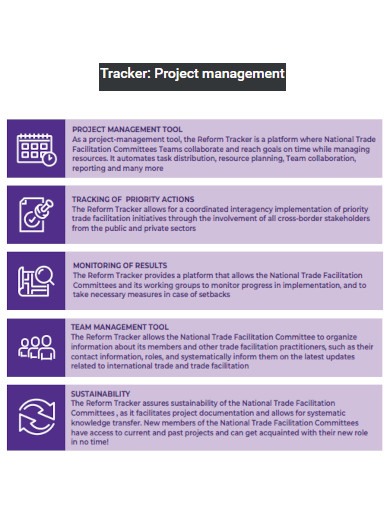
Project Management Tracker
download now -
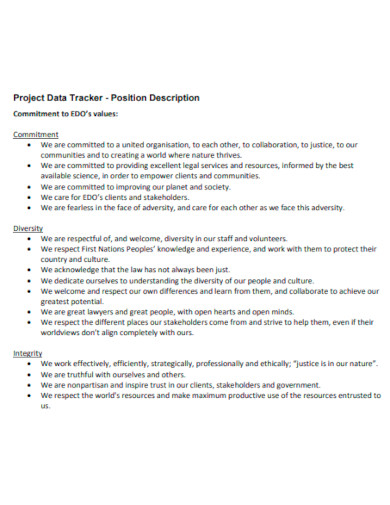
Project Data Tracker
download now -
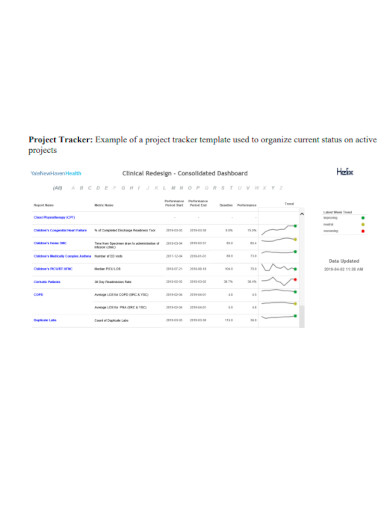
Project Tracker Example
download now -
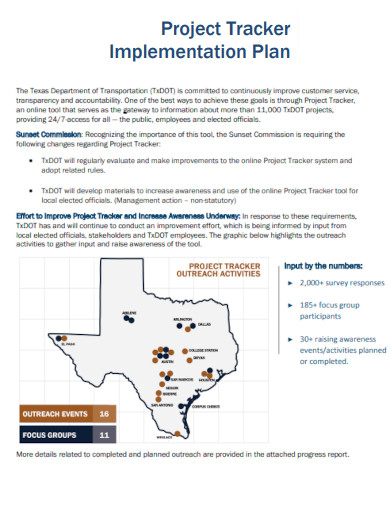
Project Tracker Implementation Plan
download now
What is a Project Tracker?
A project tracker aids in the efficient management of multiple projects by providing individuals and professionals with a centralized tool to monitor and control various aspects of their projects and project management plans. It gives real-time visibility into project status, allowing managers to allocate resources effectively, identify potential bottlenecks, prioritize tasks, and take necessary actions to keep the project on track. This tool also facilitates smooth communication and collaboration among team members, ensuring everyone is aligned and working towards the same goals. By having a clear overview of each project’s status and requirements, project trackers empower individuals and professionals to make informed decisions and ensure timely project completion. Thus, a project tracker streamlines project management processes, increases productivity, and helps deliver projects on time and within budget.
A project tracker holds immense significance and benefits for professionals such as project managers, team leaders, supervisors, and directors. Firstly, it provides a centralized platform for efficient project management, saving time and reducing the risk of errors. According to a survey by Wellingtone, 77% of high-performing projects use project management software, indicating its effectiveness. It enables professionals to track project progress, allocate resources optimally, and identify potential risks or delays, increasing project success rates by 16% (Source: PMI). With a project tracker, professionals can enhance communication and collaboration within teams, leading to a 75% reduction in miscommunication-related project delays (Source: Project Management Institute). By having a clear overview of project timelines, milestones, and dependencies, professionals can make informed decisions and take timely corrective actions. Ultimately, a project tracker empowers professionals to improve project outcomes, increase productivity, and deliver projects on time and within budget.
Basic Components of a Project Tracker
The basic components of a project tracker are essential for effective project management. From defining project details to monitoring progress and mitigating risks, each component plays a vital role in keeping projects on track. Let’s explore these components in detail to understand their significance and how they contribute to successful project execution.
Types of Project Trackers
In project management, choosing the right tracker is crucial for effective planning and progress monitoring. Various types of project trackers, including Gantt charts, Kanban boards, and milestone charts, offer diverse approaches to visualize and manage projects, ensuring successful execution and timely delivery.
How to Create a Project Tracker
Creating a project tracker can be a valuable step in agile project management. Follow these four steps to create a simple and effective project tracker using a printable Excel spreadsheet:
Step 1: Determine Tracker Requirements
Identify the key elements you need to track in your projects, such as tasks, deadlines, progress, and resources. Consider if you need a chart-based template or a table-based design to suit your project planning and progress monitoring needs. Additionally, assess if the tracker should accommodate multiple projects or focus on a single project.
Step 2: Design the Tracker Template
Using Excel, create a customizable template that aligns with your project requirements. Incorporate columns for task names, start and end dates, assigned team members, and task status. Add additional columns for project-specific details, such as priority, dependencies, or comments. Utilize conditional formatting to highlight task progress visually.
Step 3: Establish Project Structure
If managing multiple projects, consider using separate sheets or tabs within the Excel file for each project. Alternatively, create sections within a single sheet to differentiate projects. Ensure each project section includes the necessary columns and data fields from the template. Use clear headings and color-coding for easy identification and organization.
Step 4: Track and Update Project Progress
Regularly input project data into the tracker, including task updates, resource allocations, and milestone achievements. Use predefined formulas or functions to automatically calculate task durations, progress percentages, and overall project completion. Regularly review and update the tracker, communicating progress to team members and stakeholders as needed.
FAQs
A project tracker offers a range of features that are specifically designed for agile project management. It allows users to create and manage agile boards, where tasks can be organized into different columns representing different stages of the project. Users can easily move tasks between columns as they progress, providing a visual representation of the project’s status. This tool also supports the creation of user stories, allowing teams to break down project requirements into smaller, actionable tasks. It provides features for sprint planning, backlog management, and burndown charts, enabling teams to effectively plan and track their progress during each sprint. Project Tracker’s agile features promote flexibility, collaboration, and iterative development, making it an ideal tool for agile project management.
One of the key advantages of a project tracker is its flexibility and customizability. Users can easily customize the tool to suit their specific project planning needs. A project tracker allows for the creation of custom fields, which can be used to capture additional project information or track specific metrics. Users can also define their own project templates, saving time and effort in setting up new projects. A project tracker supports the creation of custom workflows, allowing users to define the stages and steps involved in their project processes. Additionally, users can customize the look and feel of a project tracker by choosing from a range of themes and color schemes. This level of customization ensures that a project tracker can adapt to the unique requirements of different projects and organizations.
A project tracker’s simple printable Excel spreadsheet and chart template design offers several benefits for project management. The Excel format makes it easy to input and update project data, as well as perform calculations and analysis, and feedback evaluation. The spreadsheet layout provides a clear and organized view of project tasks, timelines, and dependencies. The chart templates, such as Gantt charts and burndown charts, offer visual representations of project progress and help in tracking and communicating project status. The printable nature of the templates allows for easy sharing and distribution of project plans and progress reports.
The project tracker offers comprehensive reporting capabilities for project analysis and evaluation. It provides a wide range of pre-built reports, such as task status reports, resource allocation reports, process reports, and project timeline reports. These reports offer insights into project progress, resource utilization, and overall project performance. The project tracker also allows users to create custom reports, tailoring the analysis to their specific needs. The reports can be exported in various formats, such as PDF or Excel, for easy sharing and distribution. The comprehensive reporting features of the project tracker enable project managers to analyze project data, identify trends, and make data-driven decisions for project improvement.
What features does a project tracker offer for agile project management?
Can a project tracker be customized to suit specific project planning needs?
How does the simple printable Excel spreadsheet and chart template design benefit project management?
Can the project tracker generate comprehensive reports for project analysis and evaluation?
The project tracker streamlines project planning, tracking, and collaboration. It helps in managing multiple projects simultaneously, promotes smooth collaboration among team members, and provides real-time visibility into project progress. The tool’s simple printable Excel spreadsheet and chart templates make project management seamless and effective. With the project tracker, users can easily track project progress, identify potential bottlenecks, and generate comprehensive reports for analysis and evaluation. It offers integrations with other project management tools and ensures data security and confidentiality. Overall, the project tracker is a reliable and powerful tool for efficiently managing projects. Easily download and use our sample project trackers and project planning templates like marketing project plans and campaign project plans.
